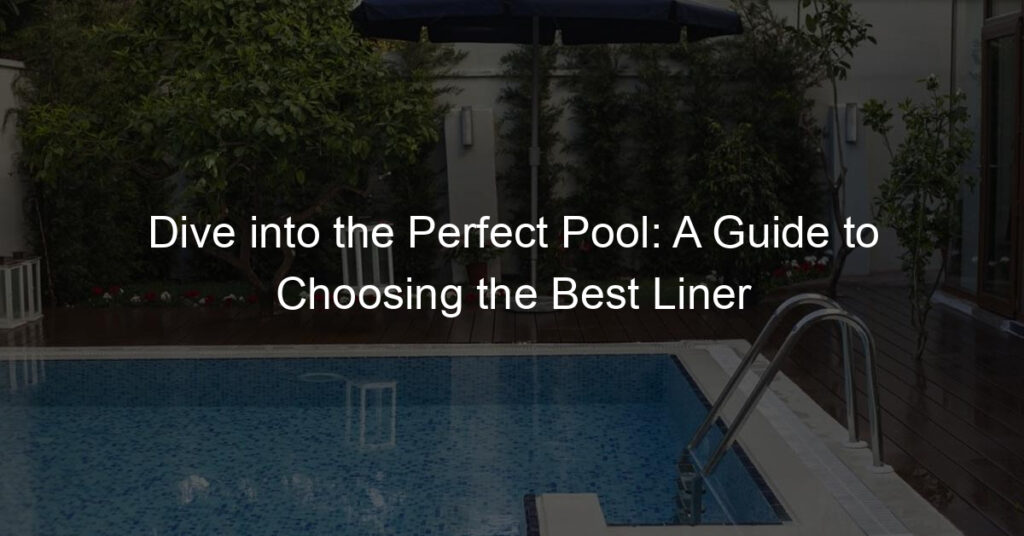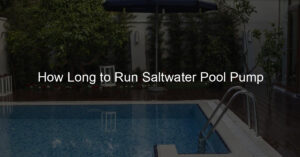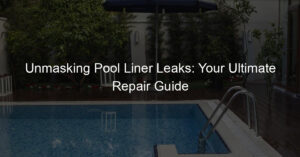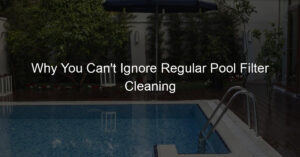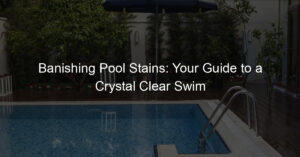Introduction to Pool Liner Selection
Choosing the right pool liner is an essential part of owning a pool. It’s not just about the color or pattern, but also about the quality and durability of the material. In this guide, we will explore the importance of pool liner selection and how it impacts the overall look and feel of your pool.
- Importance of choosing the right pool liner
- Impact of pool liners on the overall look and feel of your pool
Choosing the right pool liner is crucial for several reasons. Firstly, a good quality liner protects your pool from leaks, ensuring that it remains in excellent condition for many years. Secondly, the right liner can significantly enhance the aesthetic appeal of your pool, making it a centerpiece of your backyard. Lastly, a well-chosen liner can also contribute to the longevity of your pool, saving you from frequent and costly repairs.
The pool liner you choose can dramatically impact the overall look and feel of your pool. A bright and vibrant liner can make your pool appear more inviting, while a darker liner can give your pool a deep, lagoon-like feel. The texture of the liner also plays a role in the comfort of swimmers. A smooth liner provides a comfortable surface for swimmers, while a textured liner can provide a non-slip surface. Therefore, your choice of liner can greatly influence the swimming experience.
In conclusion, the selection of a pool liner is not a decision to be taken lightly. It requires careful consideration of factors such as durability, aesthetics, and comfort. By understanding the importance of this decision, you can make an informed choice that will enhance the enjoyment of your pool for years to come.
Understanding the Basics: Types of Pool Liners
When it comes to pool liners, there are several options to choose from. Each type of liner has its own unique set of advantages and disadvantages. Let’s dive into the basics and explore the three main types of pool liners: vinyl, fiberglass, and concrete.
Overview of Pool Liner Options
- Vinyl Liners
- Fiberglass Liners
- Concrete Liners
Vinyl liners are a popular choice for many pool owners. They are cost-effective and come in a variety of colors and patterns. Vinyl liners are also quite durable, but they can be prone to punctures and may need to be replaced every 7 to 10 years.
Fiberglass liners are another great option. They are known for their smooth surface and longevity. These liners are also easy to install and require less maintenance than vinyl liners. However, they can be more expensive upfront.
Concrete liners are the most durable of the three types. They can be customized to any shape or size, making them a great option for unique pool designs. However, they require more maintenance and can be rough on the feet.
In conclusion, the type of pool liner you choose will depend on your budget, maintenance preferences, and design needs. Understanding the basics of each type can help you make an informed decision.
Choosing Between Residential Pool Liners
When it comes to choosing a pool liner for your residential pool, there are several factors you need to consider. Each type of pool liner has its own set of pros and cons, and understanding these can help you make an informed decision.
- Factors to Consider
There are several factors to consider when choosing a pool liner. These include:
- Cost: The price of pool liners can vary significantly depending on the type. Vinyl liners are generally the most affordable, while fiberglass and concrete liners tend to be more expensive.
- Durability: Some pool liners are more durable than others. For example, concrete liners are known for their longevity, but they may require more maintenance than vinyl or fiberglass liners.
- Maintenance: Different types of pool liners require different levels of maintenance. Vinyl liners, for example, may need to be replaced more frequently than other types.
- Appearance: The look of the pool liner can greatly affect the overall aesthetic of your pool. Consider the color, pattern, and texture when making your choice.
- Pros and Cons of Each Type
Each type of pool liner has its own set of advantages and disadvantages. Here are some to consider:
| Type of Liner | Pros | Cons |
|---|---|---|
| Vinyl Liners | Cost-effective, easy to install, and available in a variety of colors and patterns. | May need to be replaced more frequently than other types, can be punctured easily. |
| Fiberglass Liners | Durable, low maintenance, and nonporous, which prevents algae growth. | More expensive than vinyl, less customizable in terms of shape and size. |
| Concrete Liners | Extremely durable, customizable in terms of shape and size, and can add value to your home. | Most expensive option, requires more maintenance, and can be rough on the feet. |
In conclusion, choosing the right pool liner depends on your budget, maintenance preference, and aesthetic taste. By considering these factors and understanding the pros and cons of each type, you can make the best choice for your residential pool.
Guide to Choosing the Best Pool Liners
When it comes to selecting the perfect pool liner, there are several factors to consider. These considerations will help you make an informed decision that suits your needs and preferences. Let’s delve into the key aspects to keep in mind during your pool liner selection process.
Considerations for Pool Liner Selection
Choosing a pool liner is not a one-size-fits-all process. It requires careful thought and consideration of various factors. Here are some of the main points you should consider:
- Pool size and shape: The size and shape of your pool are crucial in determining the type of liner you need. For instance, larger pools may require more durable liners, while uniquely shaped pools might need custom-fit liners.
- Climate and weather conditions: Your local climate and weather conditions can significantly impact the lifespan and performance of your pool liner. For example, liners in areas with harsh sunlight or freezing temperatures may need to be more resistant to these conditions.
- Budget constraints: Pool liners come in a range of prices, and it’s essential to choose one that fits your budget. However, remember that investing in a high-quality liner can save you money in the long run by reducing the need for frequent replacements.
- Personal style and preferences: Pool liners are available in various colors, patterns, and finishes. Choose a design that complements your pool area and reflects your personal style.
By considering these factors, you can ensure that you choose a pool liner that not only enhances the aesthetics of your pool but also offers durability and value for money.
Quality Pool Liners: What to Look For
When it comes to choosing a pool liner, there are several key factors to consider. These include durability, warranty, thickness, and color and pattern options. Let’s delve into each of these in detail.
- Durability
- Warranty
- Thickness
- Color and Pattern Options
Durability is a crucial factor when selecting a pool liner. A durable liner will withstand the elements, resist punctures and tears, and last for many years. It’s important to note that the durability of a liner is often linked to its thickness. The thicker the liner, the more durable it tends to be.
A warranty is a guarantee from the manufacturer that the product will perform as expected. When choosing a pool liner, look for one that comes with a solid warranty. This will give you peace of mind knowing that if anything goes wrong, the manufacturer will cover the costs of repair or replacement.
Thickness is another important factor to consider when choosing a pool liner. Thicker liners are generally more durable and resistant to punctures and tears. However, they can also be more difficult to install and may require professional installation.
Finally, consider the color and pattern options available. The color and pattern of your pool liner can greatly affect the overall look and feel of your pool. Choose a color and pattern that complements your outdoor decor and personal style.
In conclusion, when choosing a pool liner, it’s important to consider its durability, warranty, thickness, and color and pattern options. By taking these factors into account, you can ensure that you choose a liner that not only looks great but also stands the test of time.
Pool Liner Installation: A Step-by-Step Guide
Installing a pool liner is a task that requires careful planning and execution. This guide will walk you through the process in three main steps: preparing the pool, installing the liner, and filling and finishing the pool. Let’s dive in!
- Preparing the Pool
Before you can install the liner, you need to prepare the pool. This involves cleaning the pool thoroughly to remove any dirt, algae, or debris. Use a pool vacuum or a brush to clean the pool walls and floor. Once the pool is clean, check for any sharp objects or rough surfaces that could damage the liner. If necessary, sand down any rough spots to create a smooth surface.
- Installing the Liner
Once the pool is prepared, you can begin installing the liner. Start by unfolding the liner and placing it in the pool. Make sure the liner is centered and smooth out any wrinkles. Then, start attaching the liner to the pool walls, starting from the deep end and working your way towards the shallow end. Use a liner lock to secure the liner in place. Remember to take your time during this step to ensure the liner is installed correctly.
- Filling and Finishing the Pool
After the liner is installed, you can begin filling the pool with water. As the pool fills, continue to smooth out any wrinkles in the liner. Once the pool is filled, check the liner for any leaks. If there are no leaks, you can finish the pool by installing the pool ladder, skimmer, and return fittings. Congratulations, you have successfully installed a pool liner!
Here’s a quick summary of the process:
| Step | Description |
|---|---|
| Preparing the Pool | Clean the pool and check for any sharp objects or rough surfaces |
| Installing the Liner | Unfold the liner, place it in the pool, and attach it to the pool walls |
| Filling and Finishing the Pool | Fill the pool with water, check for leaks, and install the pool ladder, skimmer, and return fittings |
Remember, installing a pool liner can be a challenging task, but with careful planning and execution, you can do it successfully. Happy swimming!
When to Consider Pool Liner Replacement
Pool liners are a crucial part of your swimming pool. They not only give your pool a clean and finished look but also protect its structure from water damage. However, like any other part of your home, pool liners can wear out over time and may need replacement. Knowing when to replace your pool liner can save you time, money, and potential damage to your pool. Let’s explore the signs that your pool liner needs replacing and the costs associated with pool liner replacement.
- Signs your pool liner needs replacing
- Age: Most pool liners last between 10 to 15 years. If your liner is within this age range, it might be time to consider a replacement.
- Cracks and Tears: If you notice cracks or tears in your liner, this is a clear sign that it needs to be replaced. These can lead to leaks which can damage the structure of your pool.
- Fading: Over time, the sun and chemicals can cause your liner to fade. While this is not a direct sign of damage, it can indicate that the liner is becoming weak and may soon need replacement.
- Water Loss: If you’re constantly needing to add water to your pool, this could be a sign of a leak. A leaking liner needs to be replaced as soon as possible to prevent further damage.
- Costs associated with pool liner replacement
There are several signs that your pool liner may need to be replaced. These include:
The cost of replacing a pool liner can vary greatly depending on the size and shape of your pool, the type of liner you choose, and the labor costs in your area. Here’s a general breakdown:
| Type of Cost | Average Cost |
|---|---|
| Pool Liner Material | $700 – $1,500 |
| Installation Labor | $500 – $1,000 |
| Total Cost | $1,200 – $2,500 |
Please note, these are average costs and actual costs may vary. Always get a quote from a professional before proceeding with a pool liner replacement.
Conclusion: Your Home Pool Liner Guide
We’ve covered a lot of ground in this comprehensive guide to home pool liners. Let’s take a moment to recap the key points and share some final thoughts on pool liner selection.
- Recap of key points
We started by introducing the importance of pool liner selection and how it can impact the longevity and aesthetics of your pool. We then delved into the different types of pool liners, namely vinyl, fiberglass, and concrete, each with their unique advantages and considerations.
Next, we provided a detailed guide on how to choose the best pool liner for your needs, considering factors like durability, maintenance, cost, and personal preference. We also walked you through the installation process, highlighting the importance of professional installation for best results.
Finally, we discussed when to consider pool liner replacement, emphasizing that timely replacement can prevent more significant pool damage and ensure your pool’s continued enjoyment.
- Final thoughts on pool liner selection
Choosing the right pool liner is a significant decision that can greatly impact your pool’s lifespan and appearance. It’s essential to consider all factors, including the type of liner, cost, durability, and maintenance requirements, before making your choice.
Remember, while the initial cost may seem high, a quality pool liner can save you money in the long run by reducing maintenance costs and extending the life of your pool. So, take your time, do your research, and make a choice that best suits your needs and budget.
With this guide, we hope you feel more confident in your ability to make an informed decision about your home pool liner. Here’s to many years of swimming enjoyment in your beautifully lined pool!

